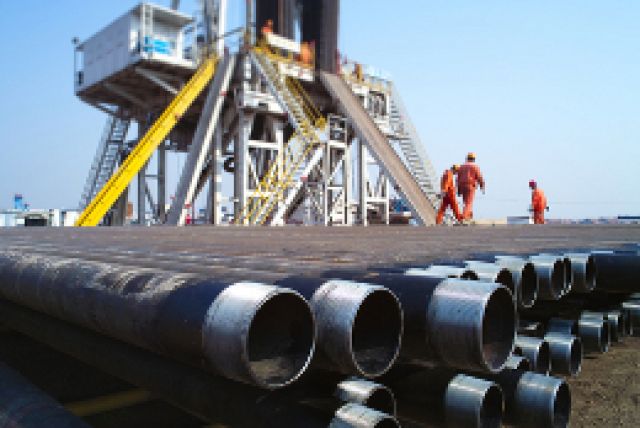
Global demand for pipes and tube products is expected to see a 4.5% compound annual growth rate with its current US $33 billion market value doubling by 2020, according to a recently released report.
Africa, Latin America, and the North American Free Trade Agreement (NAFTA) regions are predicted to see the fastest growth, Metal Bulletin Research (MBR) said in its Five Year Outlook for the Global OCTG Industry report. Pushing the demand for oil country tubular goods (OCTG) will be a need for higher grade products as directional and horizontal drilling increase along with more unconventional, sour, deep, and ultra-deepwater developments.
The outlook comes as the OCTG consumption rebounded in recent years from a slowdown in 2009. The report showed global OCTG consumption peaked at approximately 17.5 million tonnes in 2011 thanks to high oil and gas activity in parts of Asia, Canada, the Middle East, and the US, where the shale revolution is under way.
Unconventional oil sands in Canada have contributed significantly to the country’s energy growth. Canada produced nearly 3.7 MMb/d of oil in 2011, up nearly 200,000 b/d from 2010, according to the US Energy Information Administration (EIA). Dry natural gas production also increased in 2011.
In the Middle East crude oil and condensate production increased about 900,000 b/d in 2010 and increased another 1.3 MMb/d in 2011.
Currently, tight oil is the main focus of drilling activity in the US, where the EIA estimates oil production will increase from about 6.9 MM b/d in November 2012 to about 8.2 MMb/d in December 2014. In the Lower 48 states production is expected to reach 6.1 MMb/d by year-end 2014, while production from offshore fields in the Gulf of Mexico could reach about 1.6 MMb/d.
Companies are expected to continue using horizontal drilling and hydraulic fracturing for production, which is partly the reason for the expected increase in higher grade OCTG.
The OCTG market, however, lost momentum in 2012, the report said. A drop in US natural gas prices, the European sovereign debt crisis, and market concerns from slower GDP growth in China were to blame.
Regional OCTG consumption for Asia, excluding China, dropped from just less than 70% in 2011 to below 10%, according to MBR. The picture was bleaker for other regions, such as the Middle East and Latin America, where OCTG consumption went negative. Consumption in the Middle East went from about 30% in 2011 to about -5% in 2012.
“Commodity markets are invariably cyclical, and it is important to note that it is those best able to invest in the down cycle that benefit the most when the up cycle returns driven by expanding global energy demand, particularly in emerging markets,” MBR said in the report.
The market was valued at about $33 billion by year-end 2012, with NAFTA taking the largest market share.
“The region maintained drilling levels with consumption remaining robust, increasing usage of higher OCTG grades,” MBR said. “NAFTA and other Asian markets predominately utilize heat-treated and alloy grades, primarily offshore and shale gas applications, while China, CIS, and Africa – more price-sensitive markets – used commoditized, nonheat-treated material.”
New projects in more challenging environments and directional drilling have led to more use of higher heat-treated grades, according to MBR. But use of such grades did not overtake usage of nonheat-treated material, which made up about half of the global demand in 2012.
By 2020 the share of nonheat-treated material is expected to fall below 40%.
MBR predicts most of the global future OCTG demand will arrive by 2016.
Contact the author, Velda Addison, at vaddison@hartenergy.com.
Recommended Reading
Deepwater Roundup 2024: Americas
2024-04-23 - The final part of Hart Energy E&P’s Deepwater Roundup focuses on projects coming online in the Americas from 2023 until the end of the decade.
Ohio Utica’s Ascent Resources Credit Rep Rises on Production, Cash Flow
2024-04-23 - Ascent Resources received a positive outlook from Fitch Ratings as the company has grown into Ohio’s No. 1 gas and No. 2 Utica oil producer, according to state data.
E&P Highlights: April 22, 2024
2024-04-22 - Here’s a roundup of the latest E&P headlines, including a standardization MoU and new contract awards.
Technip Energies Wins Marsa LNG Contract
2024-04-22 - Technip Energies contract, which will will cover the EPC of a natural gas liquefaction train for TotalEnergies, is valued between $532 million and $1.1 billion.
Galp Seeks to Sell Stake in Namibia Oilfield After Discovery, Sources Say
2024-04-22 - Portuguese oil company Galp Energia has launched the sale of half of its stake in an exploration block offshore Namibia.




